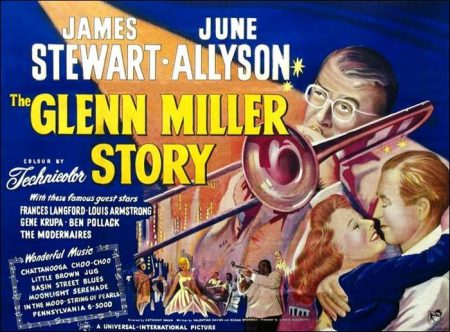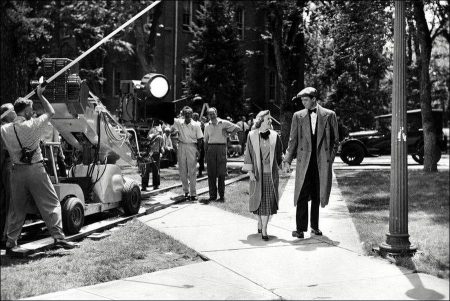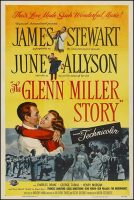Taglines: Their love made such wonderful music.
The Glenn Miller Story movie storyline. The unemployed trombone player Glenn Miller is always broken, chasing his sound to form his band and hocking his instrument in the pawn house to survive. When his friend Chummy MacGregor is hired to play in the band of Ben Pollack, the band-leader listens to one Glenn’s composition and invites him to join his band. While traveling to New York, Glenn visits his former girlfriend Helen Berger, in Boulder, Colorado, and asks her to wait for him.
Two years later he quits the band and proposes Helen that moves to New York to marry him. After the success of “Moonlight Serenade”, Glenn Miller’s band becomes worldwide known and Glenn and Helen and their two children have a very comfortable life. Duting the World War II, Glenn enlists in the army and travels to Europe to increase the moral of the allied troops. In the Christmas of 1944, he travels from London to Paris for a concert to be broadcast; however his plane is never found in the tragic flight.
The Glenn Miller Story is a 1954 American biographical film about the eponymous American band-leader, directed by Anthony Mann and starring James Stewart in their second non-western collaboration. Universal-International’s first public announcements, early in 1953, employed the soon-discarded title, “Moonlight Serenade.”
About the Story
The film follows big band leader Glenn Miller (1904–1944) (James Stewart) from his early days in the music business in 1929 through to his 1944 death when the airplane he was flying in was lost over the English Channel during World War II. Prominent placement in the film is given to Miller’s courtship and marriage to Helen Burger (June Allyson), and various cameos by actual musicians who were colleagues of Miller.
Several turning points in Miller’s career are depicted with varying degrees of verisimilitude, including: the success of an early jazz band arrangement; his departure from the Broadway pit and sideman work to front a band of his own; the failure of his first band on the road; and the subsequent re-forming of his successful big band and the establishment of the “Miller Sound” as typified by “Moonlight Serenade”. Also depicted is Miller’s international success touring his band in support of the Allies in World War II.
There are several anachronisms in the picture. When the military band led by Miller is playing in front of General “Hap” Arnold, a B-29 bomber is in the background. The marching troops are desegregated, which didn’t happen until 1948. Scenes ostensibly shot in England are clearly staged in the U.S., as witness the presence of RCA Type 44 microphones during a BBC broadcast. In reality, the BBC could not afford them and commissioned its own, cheaper version.
Facts and Fictions
In addition, several key plot points are either highly fictionalized from actual events or were invented for the film:
The Glenn Miller Story (1954)
Directed by: Anthony Mann
Starring: James Stewart, June Allyson, Harry Morgan, Charles Drake, George Tobias, Barton MacLane, Sig Ruman, Irving Bacon, Kathleen Lockhart, James Bell, Katherine Warren, Frances Langford, Louis Armstrong, Ben Pollack
Screenplay by: Valentine Davies, Oscar Brodney
Cinematography by: William H. Daniels
Film Editing by: Russell F. Schoengarth
Costume Design by: Jay A. Morley Jr.
Set Decoration by: Russell A. Gausman, Julia Heron
Art Direction by: Alexander Golitzen, Bernard Herzbrun
Music by: Glenn Miller, Joseph Gershenson, Henry Mancini
MPAA Rating: None.
Distributed by: Universal-International
Release Date: February 10, 1954 (New York City)
Visits: 111


